#west african vodun
Explore tagged Tumblr posts
Photo

A manbo (also written as mambo) is a priestess (as opposed to a oungan, a male priest) in the Haitian Vodou religion. Haitian Vodou's conceptions of priesthood stem from the religious traditions of enslaved people from Dahomey, in what is today Benin. For instance, the term manbo derives from the Fon word nanbo ("mother of magic"). Like their West African counterparts, Haitian manbos are female leaders in Vodou temples who perform healing work and guide others during complex rituals.
This form of female leadership is prevalent in urban centers such as Port-au-Prince (the capital of Haiti). Typically, there is no hierarchy among manbos and oungans. These priestesses and priests serve as the heads of autonomous religious groups and exert their authority over the devotees or spiritual servants in their hounfo (temples).
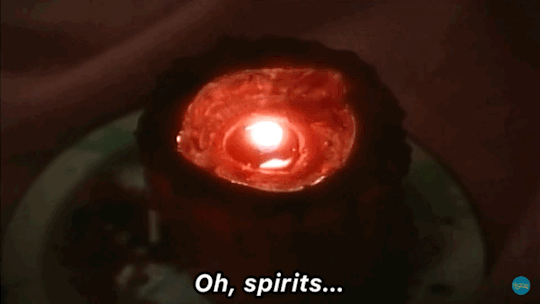
Manbos and oungans are called into power via spirit possession or the revelations in a dream. They become qualified after completing several initiation rituals and technical training exercises where they learn the Vodou spirits by their names, attributes, and symbols.
The first step in initiation is lave tèt (head washing), which is aimed at the spirits housed in an individual's head. The second step is known as kouche (to lie down), which is when the initiate enters a period of seclusion. Typically, the final step is the possession of the ason (sacred rattle), which enables the manbos or oungans to begin their work. One of the main goals of Vodou initiation ceremonies is to strengthen the manbo's konesans (knowledge), which determines priestly power.
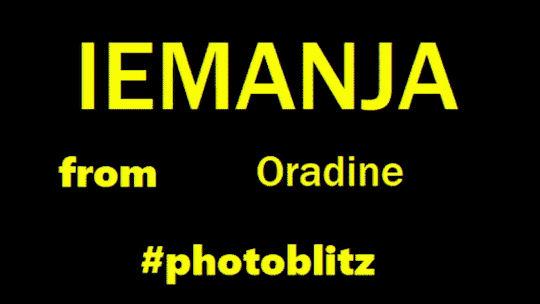
The specific skills and knowledge gained by manbos enable them to mediate between the physical and spiritual realms. They use this information to call upon the spirits through song, dance, prayer, offerings, and/or the drawing of vèvès (spiritual symbols). During these rituals, manbos may either be possessed by a loa (also spelled lwa, Vodou spirits) themselves, or may oversee the possession of other devotees. Spirit possession plays an important role in Vodou because it establishes a connection between human beings and the Vodou deities or spirits. Although loas can "mount" whomever they choose, those outside the Vodou priesthood do not have the skills to communicate directly with the spirits or gods. This is because the human body is merely flesh, which the spirits can borrow to reveal themselves via possession. manbos, however, can speak to and hear from the Vodou spirits. As a result, they can interpret the advice or warnings sent by a spirit to specific individuals or communities.
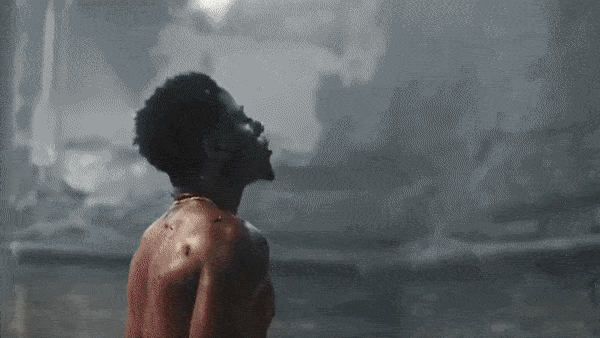
Cécile Fatiman is a Haitian manbo famously known for sacrificing a black pig in the August 1791 Vodou ceremony at Bois Caïman—an act that is said to have ignited the Haitian Revolution. There are also notable manbos within the United States. Marie Laveau (1801-1888), for example, gained fame in New Orleans, Louisiana, for her personal charm and Louisiana Voodoo practices.
Renowned as Louisiana's "voodoo queen", Laveau's legacy is kept alive in American popular culture (e.g., the television series America Horror Story: Coven).ne Mama Lola is another prominent manbo and Vodou spiritual leader in the United States. She rose to fame after the publication of Karen McCarthy Brown's ethnographic account Mama Lola: A Vodou Priestess in Brooklyn. Mama Lola's success provided her with a platform to challenge Western misconceptions of Haitian Vodou and make television appearances

#kemetic dreams#vodun#cecile fatiman#manbo#bois caiman#manbos#haitian#marie laveau#new orleans#new orleans voodoo#mama lola#vodou#lwa#oungan#nando#fan#west african#west african vodun#mother of magic#joey bada$$#brooklyn
294 notes
·
View notes
Text
Is there any pre-colonial West African drawing styles? I know about sculpting and textiles but I’m looking for drawing/painting specifically. Also y’all got any book suggestions for West African Vodun and Bakongo religion specifically?
#west africa#West African Art#West African Art History#West African History#african history#african american history#west african vodun#vodun
1 note
·
View note
Text

Vodun Priestess
This character is a priestess (or mambo) based on those following the Vodun religion of West Africa, the progenitor faith of Haitian Vodou and New Orleans Hoodoo. When designing her, I wanted to get away from the spooky connotations that Western media has often imposed on “voodoo”, but I nonetheless thought she would look cool if she had a crocodile skull attached to her staff (and it might be justified anyway since animal parts such as skulls can become sacred talismans in Vodun).
6 notes
·
View notes
Text

Not the weirdest Lore deep dive I have ever done
#Note: We are not doing the “voodoo is demonic” thing on my blog#anyone that tries to start stuff is getting blocked on sight#anyway#I love learning more about African creatures 🤗#aziza#azizan#west african mythology#black fairy#fairy#fairy lore#benin#dahomey#voodoo#vodun more accurately#vodun#“aziza are closely associated with gbo charms”#look inside#gbo is another name for a Ju-Ju#african fairy#african mythology
5 notes
·
View notes
Note
What species of dragons are found in Africa? What clades do they belong to?
ooo so I was wanting to do a Smaugust Post about this but I was unsure how, so I'll just reply to this question with 12 very rushed dragon doodles...
(edit; to be clear this is in my creative project Dracones Mundi, not 'real dragons' or a comprehensive list of mythology. Dragon designs inspired by mythology)
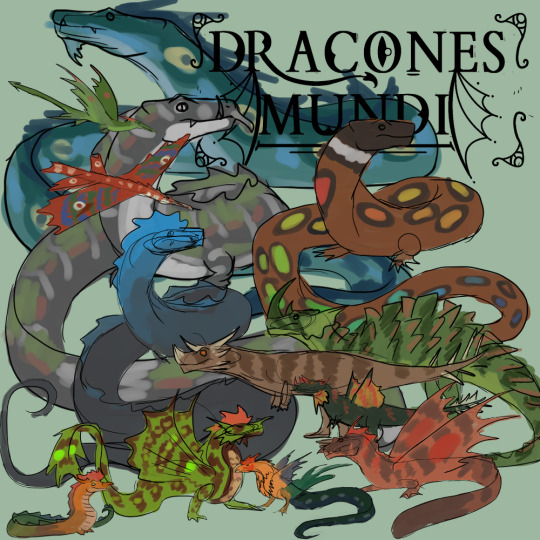
Click the 'keep reading' to learn more!
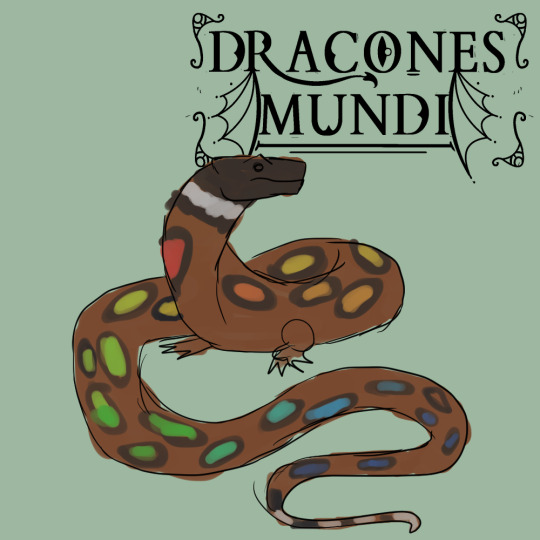
West African Rainbow Serpent (Dracovermidae: Afroserpens iris)
This dragon is specifically a 'west African rainbow serpent' to differentiate been this and the Australian rainbow serpent. The West African Rainbow Serpent is based on West African folklore (Vodun tradition among other things, deities such as Ayedo Wedo etc.) and the physical design is based on an art sculpture of Ayedo Wedo a friend sent me a picture of (black head, white neck collar) + some snakes I like (spots with dark rims) + rainbow gradient.

Grootslang (Dracovermidae: Afroserpens magnus)
A gigantic dragon with diamond eyes said to live in caves under South Africa - looking into South African caves to discover there are vast bodies of water in huge caves was an experience - the above design is a loose idea, the final Grootslang for the Dracones Mundi project may look different...
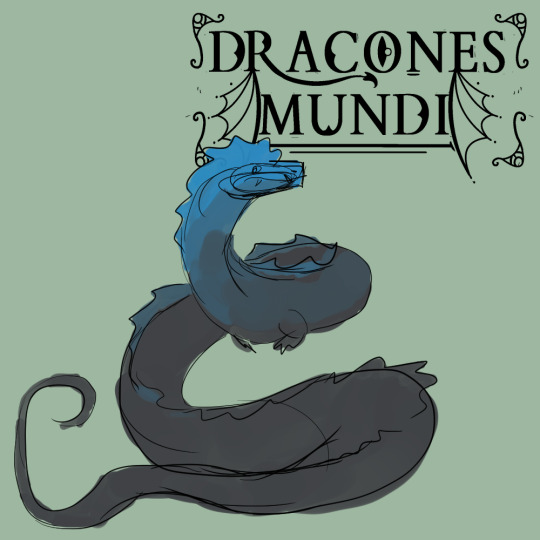
Elephant Eating Serpent (Dracovermidae: Afroserpens aethiopicus)
Based on bestiaries saying 'big serpents in Africa wrap elephants in their coils'.
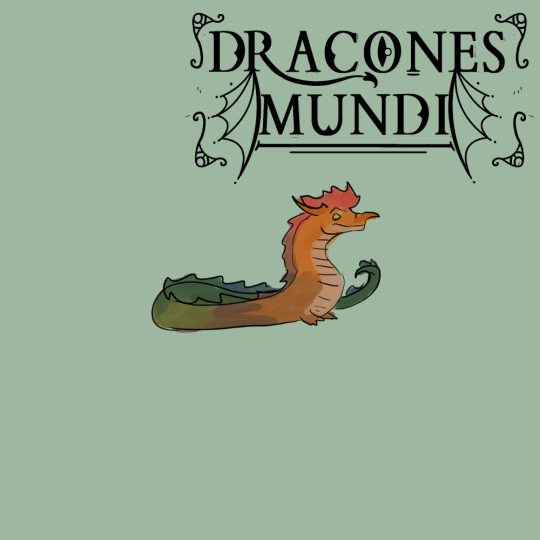
Chicken Headed Serpent (Afroserpens gallocephallus)
I might merge this design with the existing cockatrice design (see further below), only time will tell...
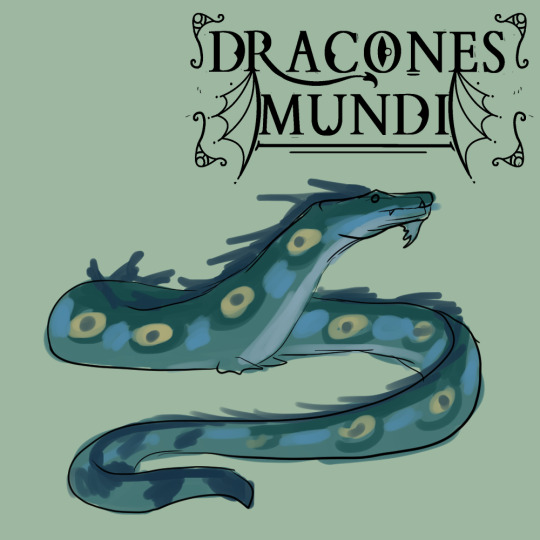
Nile Serpent? (Dracovermidae: Dracovermis hydra)
Huge serpent found in the Nile, and in the Mediterranean. Inspiration for Apep/Apophis in Egypt, but also for the Hydra in Greece.
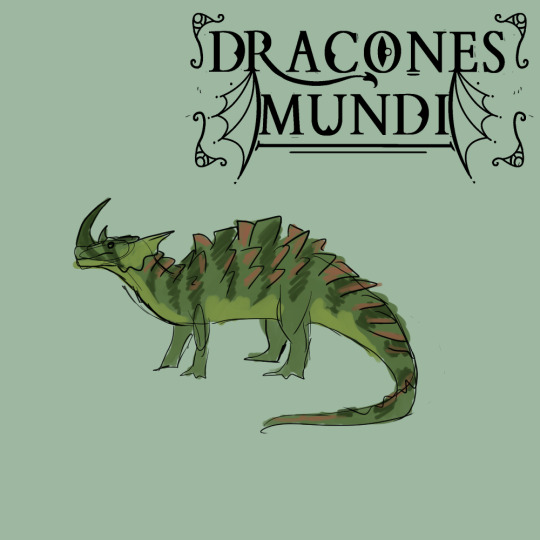
Congan Plated Dragon (Testudracidae: Stegosuchus monstrum)
Large dragon that lives in the Congo Basin - inspired by Mokele Mbembe, Emele Ntouka and Mblieu Mblieu Mblieu
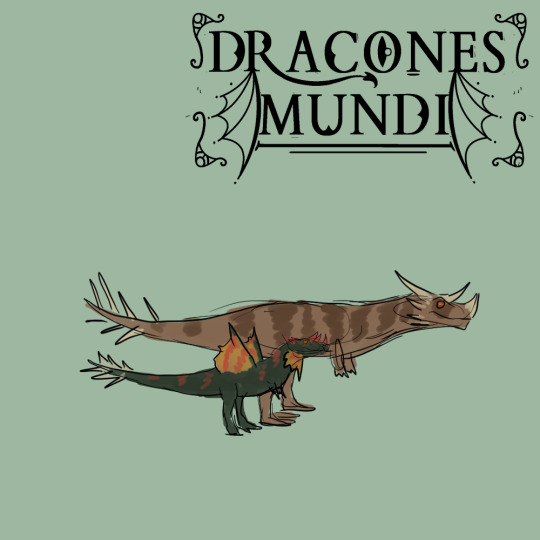
Dinodrakes (Drakonidae: Dinodrako...? )
Silly dragon I put on Madagascar - not inspired by folklore, these are just funny dinosaur inspired dragons. Mr Razzledazzle and his beautiful big wife.
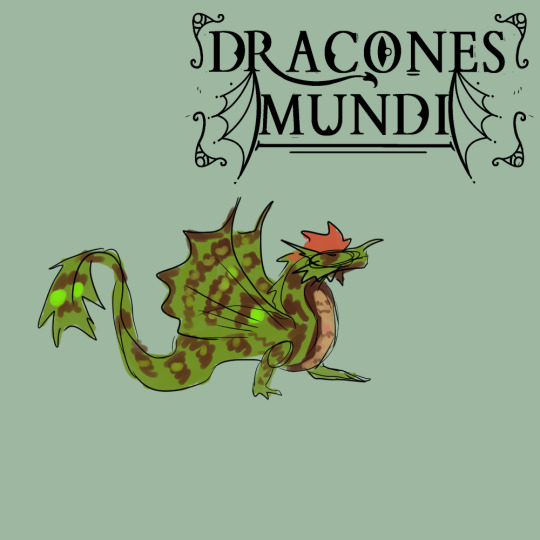
Green Wyvern (Megaviperidae: Megavipera virida)
Based on Europeans slapping a little green dragon on maps of Africa for 'Aethiopia', 'here be dragons'. Also this is Saint George's dragon, so in versions of the legend where the saint fights the dragon in Libya I decided to put the green wyvern in Libya. Green wyverns therefore have a wide distribution in Dracones Mundi as Saint George has fought the dragon throughout North Africa, the Middle East and Europe.
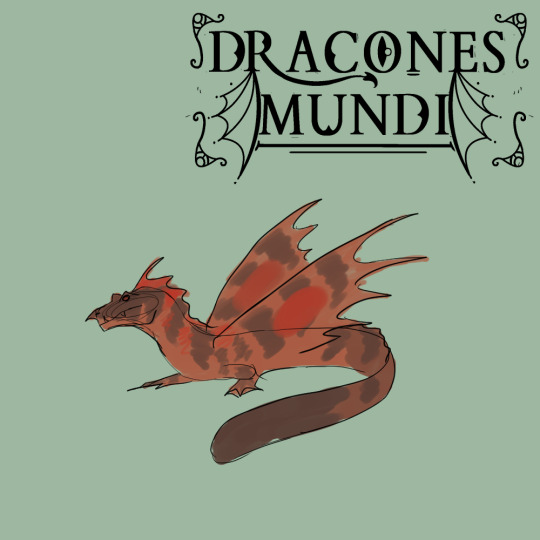
Kongomato (Megaviperidae: ?)
A swimming dragon that lives in Zambia - it can grab boats with it's powerful jaws, swim with it's powerful tail and has huge wings. I am not certain on this final design, working on it...
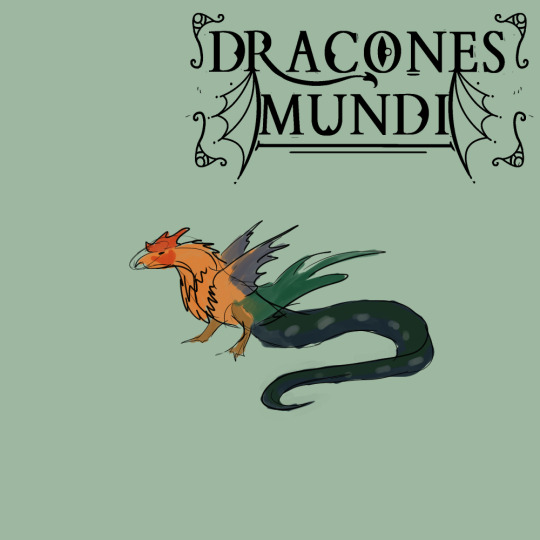
Cockatrice (Medaviperidae: Basilliskos gallimimus)
CHICKEN DRAGON. Very deadly. Found throughout the world, including Africa.
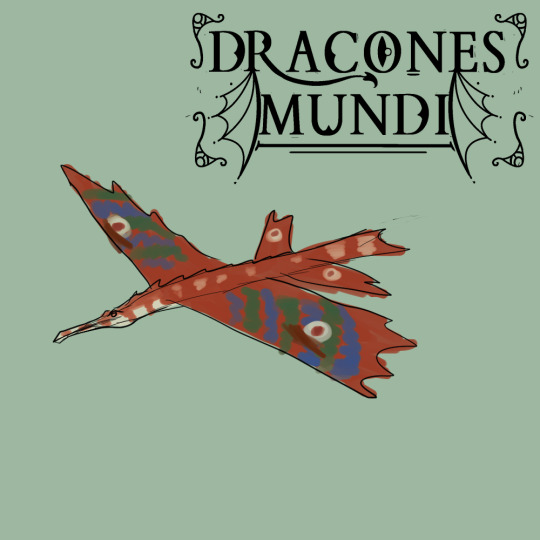
Jaculus (Megaviperidae: Pteraserpens jaculus)
Jaculus, the javeline serpent, can fly at intense speeds, stabbing prey with it's sharp face.
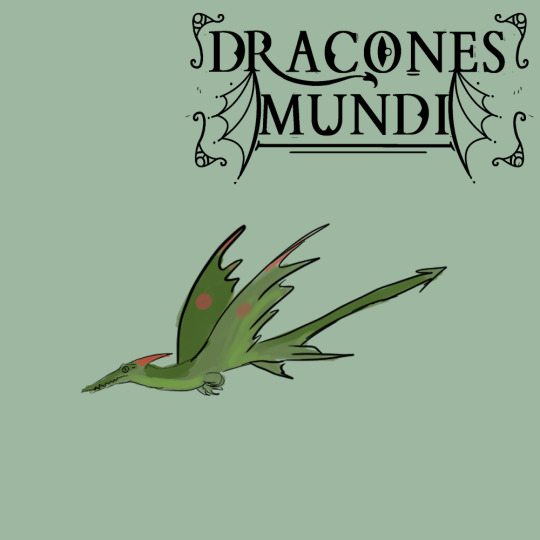
Terrorsaur (Megaviperidae: Pteroserpens...?)
Silly dragon based on "what if janky cartoony green pterodactyls are dragons?" and then I found a lot of cryptozoology places 'pterosaurs' in central Africa. Playing with this concept, nothing solid yet.
...
There are some other African dragons that I'm not sure about including - Ninki Nanka is something I have had on my radar for a while but I could not find enough info on it to write or draw something (recently looked it up again and there is more info wow... Okay next draft will include Ninki Nanka!!!!)
and Akhekhu which I had in a previous draft then abandonned. Might put him back in. Not sure if he's dragony enough?
So in this current roster of African dragons we have 6 inspired by African folklore and mythology (Grootslang, Rainbow Serpent, Nile Serpent, Congan Plated Dragon, Kongomato, Chicken Headed Serpent) 4 inspired by European mythology saying 'this lives in Africa' (Cockatrice, Green wyvern, Jaculus, Elephant Eating Serpent) and 2 I made up just for fun (Dinodrakes and Terrorsaurs)
133 notes
·
View notes
Text
Okay. Thanks a lot for @antea21 🫡 because man, I found out something really interesting.
MILD SPOILER FOR 5.5 SAURIAN WORLD QUEST AND OTHER SAURIAN WORLD QUESTS CHAIN, ESPECIALLY: "Shadows of the Mountains", "For the Night, What is the Night", and "Moment of Awakening"!!!
After we finished the 5.5 World Quest, Titu (the guy from the Khaenri'ahn soldiers quest, "Shadows of the Mountains),

and also one of the humans Kukulkan used as disguise, said this:

To be honest, to me, it sounds like what Chiyo said in the 5.4 Mikawa Flower Festival after she was freed by Raiden Ei... waking up from a long dream...
But what's gobsmacked me though, was not Titu, but another human we suspect to be a disguise of Kukulkan.
Legba. The guy from the Wayob in the Scion of the Canopy's old temple quest, "For the Night, What is the Night". His dialogues haven't changed.

His dialogues:


This is so disturbing for me. Why Titu was changed but not him? Shouldn't also be freed from Kukulkan's grip, right?
But this got me thinking... perhaps Legba isn't Kukulkan's puppet.
He's Xiuhcoatl.
"Radaedan what the fuck are you saying bro😭 get a grip. Stop overdosing on copium-" HEAR ME OUT FIRST BRO😭
• In his quest, Legba said this:

"Brilliant children"? If he was Kukulkan, this doesn't make sense. Och-Kan was his only son, and as far as I know, the new lore doesn't contradict this.
Also, I take a liberty to see of the name which Legba was inspired of:
Papa Legba is a lwa [Voodo Spirit], or loa, in West African Vodun and its diasporic deritatives... Legba is a favorite lwa of children due to his jolly, grandpa-like image. He is often tasked with babysitting and distracting children (a typical male role in the matrilineal religion) while more serious rituals are being performed by the adults.
"Papa Legba" - Wikipedia
Beside Hoyo's interesting decision to use the name of an African spirit for a white NPC😀, I just couldn't wrap my head of Kukulkan being described like this. Compare this to Titu and Manqu's historical counterparts:
Don Diego de Castro Titu Kusi Yupanki was an Inca ruler of Vilcabamba and the penultimate leader of the Neo-Inca State. He was a son of Manco[Manqu] Inca Yupanqui, He was crowned in 1563, after the death of his half brother, Sayri Tupac.
...Cusi is the "narrator" and source of An Inca Account of the Conquest of Peru, a firsthand account of the Spanish invasion, narrated by him in 1570 to Spanish missionary Fray Marcos García and transcribed by Martín de Pando, his mestizo assistant.
"Titu Cusi" - Wikipedia
Titu Cusi became the ruler after his half-brother's death. Kind of like Kukulkan acting as the regent during Xiuhcoatl's absence. Cusi being a "narrator" and source of a historical account also fits the in-game Titu's role as storyteller.
Manco Cápac (before c. 1200 – c. 1230; Quechua: Manqu Qhapaq, "the royal founder"), also known as Manco Inca and Ayar Manco, was, according to some historians, the first governor and founder of the Inca civilization in Cusco, possibly in the early 13th century. He is also a main figure of Inca mythology, being the protagonist of the two best known legends about the origin of the Inca, both of them connecting him to the foundation of Cusco. His main wife was his older sister, Mama Uqllu, also the mother of his son and successor Sinchi Ruq'a. Even though his figure is mentioned in several chronicles, his actual existence remains uncertain.
"Manco Cápac" - Wikipedia
Founder and ruler are still within Kukulkan's range. Incest aside, being co-ruler with your siblings also fit Kukulkan and Xiuhcoatl's dynamic.
But, the name Manqu wasn't had only been held by one person.
Manqu Inka Yupanki (Quechua) (around 1515 – 1544) (Manco Inca Yupanqui in Spanish) was the founder and monarch (Sapa Inca) of the independent Neo-Inca State in Vilcabamba, although he was originally a puppet Inca Emperor installed by the Spaniards. He was also known as "Manco II" and "Manco Cápac II". He was one of the sons of Huayna Capac and a younger brother of Huascar.
...Manco Inca, one of the more than 50 sons of Huayna Capac, was born in Cuzco. When Atahualpa's troops took the city under the command of General Quizquiz, they killed the descendants of Huayna Capac, the Huascar supporters, and anyone who could try to take the place of the Inca. Because of this, Manco Inca was forced to flee, avoiding any contact with the atahualpists.
On 14 November 1533, he met the conquistador Francisco Pizarro and his contingent, both Inca and Spanish. This and other events such as the massacre of Atahualpa led Manco Inca to believe that the Spaniards were "saviors" sent by the gods.
"Manco Inca Yupanqui" - Wikipedia
He was also the father of the aforementioned Titu Cusi btw. I have to admit, this is a gross comparison and a strech, but Manco Inca's initial belief that the Spaniards were "saviours" sent by the gods could be like how Kukulkan viewed humans as the "saviours" of the dragon race. Both became disillusioned in the end.
Now let's compare Titu and Manqu's historical counterparts with Legba's. That's right, they're worlds apart. The formers were emperors caught in family feuds and colonization, while the later is a Spirit best described as paternal.
But do you know who could be described as having many children?
Okay... I have to admit, this one is a bit of a stretch, especially since we don't know how Xiuhcoatl and the Dragonlords viewed each others, and how their relationships were like. But I want to point out Kukulkan's commentary left in the Secret Source Servant:

"Your descendants"... at the very least, Kukulkan acknowledged that the Dragonlords were Xiuhcoatl's descendants. (Btw, a little off-topic, but I NEED to talk about how Xiuhcoatl intentionally made the Secret Source Servants looks adorable. He could have just choose any other form that's more energy-efficient, but he insisted to use the adorable form??? My King...😭 born to make kawaii, forced to fight the Abyss, Celestia, and humans😔.)
• Let's retrace the mechanism of draconic shape-shifting a bit. Kukulkan explained that it was through the power of the Phlogiston of rewriting their physical form by borrowing the existing human ones' 'codes'.
Kukulkan: Phlogiston is an atom upon which information may be transcribed, and is itself a form of "computronium" — an element that can be used to imitate the essence of any and all things through the weaving of languageIridescent Inscriptions... This is why phlogiston can take on different forms and even switch between them, and this is also why you could see phantoms at the repair mechanisms in the Chamber of Deliberation.
- "An Omen of Annihilation and the Final Entreaty" Quest
So basically, shape-shifting is a bit like copying a code source. If someone knows the code source, they could copy the program. In this case, human soul acted as the code source, and Kukulkan stole them to copy their forms.
But this means that theoritically, this ability isn't just special to him. If someone knows programming, they could do a similar feat as him, right?
Well, well, well, who's the one who diddled with the power of Phlogiston first? Xiuhcoatl.
Kukulkan: Xiuhcoatl was the master of the first flame, wielder of all light, heat, and wisdom. He controlled the primal flame, and could even plunge his entire body into it.
And he also was the first dragon who emerged from the Primal Flame (unfortunately I didn't screenshot the text where Kukulkan said it😭 so correct me if I'm wrong.)
If he was the first master of the Primal Flame, and the one who came out with all the phlogistonization in the first place, is it too far-fetched to assume that he could also shape-shift?
But well... these are all my conjectures😅 I don't expect this to be true. I don't even know how or why he used Legba's form, and how he wasn't detected by Kukulkan all of those years. It could've been my account is kinda fucked, I haven't played certain quests, or I just dug too deep into it. And possibly because I just want my king to be alive okay😔
I also really, really, really want to dissect the Secret Source Servant's records, because damn some of those have very interesting implications😈
How about you? Does Legba in your account have changes in his dialogues? Or do you have your own theories?
#I JUST WANT MY KING TO BE ALIVE OKAY#MY COPIUM SHALL NEVER DIE#genshin impact#genshin#genshin lore#natlan#natlan lore#genshin theory#tollan volcano#genshin 5.5 world quest#genshin 5.5#xiuhcoatl#waxaklahun ubah kan#kukulkan#genshin xiuhcoatl#genshin kukulkan#radaedan posting
21 notes
·
View notes
Text
AFRICAN VOODOO
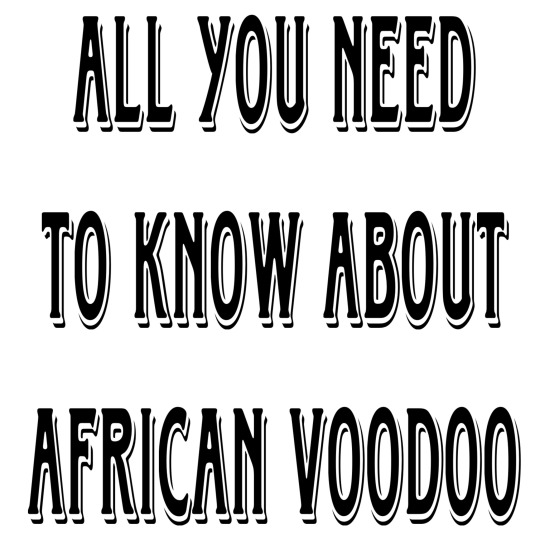
The deep truth about AFRICAN VOODOO
African Voodoo: Unraveling the Mysteries of a Rich Spiritual Tradition
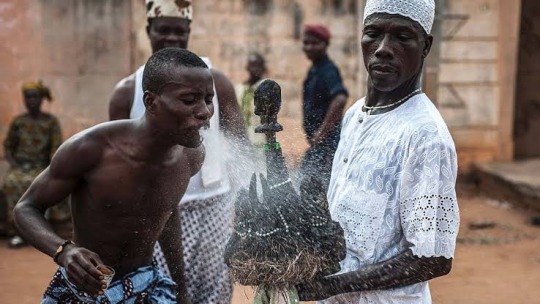
African Voodoo, often shrouded in mystery and misconceptions, is a complex and fascinating spiritual tradition with deep-rooted cultural significance. This ancient belief system, practiced in various forms across the African continent and the African diaspora, offers a unique perspective on the relationship between humans, nature, and the divine. In this article, we will delve into the world of African Voodoo, exploring its history, beliefs, rituals, and its enduring impact on the cultures and societies where it thrives.
A Diverse Tradition
Voodoo, also spelled Vodou or Vodun, is not a monolithic belief system; rather, it is a diverse and adaptable spiritual tradition that has evolved differently in various regions of Africa and beyond. Its origins can be traced back to the indigenous religions of West and Central Africa, where it was practiced by different ethnic groups. Over time, African Voodoo underwent syncretism with Catholicism and indigenous beliefs in the Caribbean, particularly in Haiti, giving birth to Haitian Vodou, which is perhaps the most well-known form of Voodoo.
Core Beliefs
At its core, African Voodoo centers around the veneration of spirits, ancestors, and deities. These spirits are believed to have the power to influence human life and the natural world. Each spirit has a specific domain, and practitioners seek their guidance and assistance through various rituals and offerings. Ancestor worship is a fundamental aspect of Voodoo, as it connects the living to their familial lineage and heritage.
The Loa, or spirits, are a central focus of Voodoo ceremonies. These spirits are intermediaries between humans and the ultimate divine force. Practitioners often enter trance-like states to communicate with the Loa, who possess them temporarily during rituals. The Loa are known for their distinct personalities and preferences, and offerings such as food, drinks, and dance are made to appease and honor them.
Rituals and Practices
Voodoo rituals are colorful and lively events filled with drumming, dancing, singing, and the use of symbolic objects. Rituals are often held in temples or outdoor spaces, and they vary widely depending on the specific tradition and purpose. Some rituals are celebratory, while others are intended to seek protection, healing, or guidance.
One of the most famous Voodoo rituals is the "Voodoo Doll," which is often misunderstood. These dolls are not meant for causing harm but are used as tools for healing or connecting with a specific person's spirit. Pins may be used symbolically to focus intention.
Voodoo in the African Diaspora
The transatlantic slave trade played a significant role in spreading African Voodoo to the Americas, particularly in regions like Haiti, New Orleans, and Brazil. In these places, Voodoo underwent further syncretism with local beliefs and Catholicism, resulting in unique variations of the tradition.
Haitian Vodou, for instance, is a vibrant blend of African Voodoo, Catholicism, and indigenous Taino beliefs. It has had a profound impact on Haitian culture and played a central role in the struggle for independence from colonial rule.
Misconceptions and Stereotypes
African Voodoo has been the subject of many misconceptions and stereotypes, often portrayed negatively in popular culture. These portrayals frequently focus on the more sensational aspects of Voodoo, such as curses and zombies, rather than its rich cultural and spiritual dimensions. It's important to recognize that Voodoo is a legitimate religious practice for millions of people, and like any belief system, it encompasses a wide range of beliefs and practices.
African Voodoo is a complex, multifaceted spiritual tradition with a deep and enduring cultural significance. It is a testament to the resilience of African heritage and the ability of beliefs to adapt and evolve over time. Beyond the stereotypes and misconceptions, Voodoo represents a profound connection between humans, nature, and the divine—a connection that continues to shape the lives and cultures of those who practice it.
Communication with the spirits, often referred to as Loa or Lwa in Voodoo, is a central aspect of Voodoo rituals and practices. Here's an overview of how practitioners communicate with these entities:

1. **Rituals and Offerings**: Voodoo rituals are the primary means of communication with the spirits. Practitioners gather in a designated sacred space, such as a temple or outdoor altar. They often create an elaborate ritual environment with symbols, candles, and ceremonial objects. Offerings, including food, drinks, tobacco, and other items, are presented to specific spirits to gain their favor and attention.
2. **Dance and Music**: Music and dance are essential elements of Voodoo ceremonies. Drumming and chanting create a rhythmic and trance-inducing atmosphere. Through dance and music, practitioners enter altered states of consciousness, allowing them to connect with the spirits more profoundly. It is believed that the spirits may possess individuals during these ceremonies, providing a direct channel for communication.
3. **Possession and Trance**: One of the most distinctive aspects of Voodoo rituals is the concept of spirit possession. Practitioners, often referred to as "servants of the spirits," may enter a trance-like state during which a particular Loa or spirit is believed to take control of their body. In this state, the possessed individual may speak in the voice of the spirit, offering guidance, advice, or requests on behalf of the spirit.
4. **Divination**: Divination is another way to communicate with the spirits in Voodoo. Practitioners may use various divination tools such as tarot cards, cowrie shells, or casting of objects to seek guidance from the spirits. These divination practices help practitioners understand the desires and intentions of the spirits and may provide insights into their own lives.
5. **Prayer and Invocation**: Voodoo practitioners often use prayer and invocation to establish a connection with the spirits. Specific prayers or invocations are recited to call upon a particular spirit's presence and assistance. These prayers are typically passed down through generations and may be spoken in a specific language or dialect.
6. **Voodoo Dolls**: Contrary to popular misconceptions, Voodoo dolls are not used for causing harm but are symbolic tools for communication. They can represent a specific person or spirit and are employed in rituals to convey intentions, requests, or healing energy to the spirits associated with them.
It's important to note that communication with the spirits in Voodoo is a deeply spiritual and cultural practice, and the methods may vary among different Voodoo traditions and communities. Voodoo practitioners believe that these rituals and practices maintain a reciprocal relationship with the spirits, offering offerings and devotion in exchange for protection, guidance, and assistance in various aspects of life.
Masquerades and Voodoo in Africa: A Cultural Tapestry of Spiritual Expression
Africa is a continent rich in cultural diversity, and its spiritual practices are as varied as its landscapes. Among the many vibrant traditions that permeate African culture, masquerades and Voodoo (often spelled Vodun or Vodou) hold significant places in the hearts and lives of its people. This article explores the fascinating intersection of masquerades and Voodoo, shedding light on how these practices are intertwined with African spirituality.
**Masquerades: The Embodiment of Spirits**
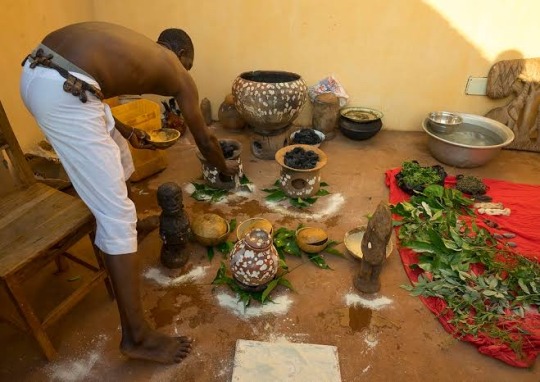
Masquerades are a prominent cultural phenomenon across Africa, characterized by elaborate costumes, masks, and dances. These performances serve multifaceted purposes, including entertainment, social commentary, and spiritual expression. However, it's the latter aspect, the spiritual dimension, that ties masquerades to Voodoo and other indigenous African belief systems.
1. **Role of Ancestors**: In many African cultures, masquerades are a means of connecting with ancestors and spirits of the deceased. The masks and costumes worn by performers often represent these spirits. During masquerade ceremonies, participants believe that the spirits inhabit the masks and interact with the living. This interaction serves as a way to honor and seek guidance from the ancestors.
2. **Protection and Cleansing**: Some masquerades have protective roles in communities. They are believed to ward off evil spirits, illnesses, or other malevolent forces. These masquerades often perform purification rituals, symbolically cleansing the community and its members.
3. **Harvest and Fertility Celebrations**: Masquerades are frequently associated with agricultural and fertility rites. They may perform dances and rituals to ensure a bountiful harvest or to promote fertility among the community members.
4. **Social Order and Governance**: Masquerades also play a role in enforcing social norms and maintaining order within communities. They may act as judges, mediators, or enforcers of communal rules during their performances.
**Voodoo: The Spiritual Heartbeat**
Voodoo, a widely practiced religion across West Africa and its diaspora, is deeply entwined with masquerades and the spiritual fabric of the continent.
1. **Ancestor Worship**: Voodoo places a significant emphasis on ancestor worship, much like masquerades. Practitioners believe that the spirits of ancestors are ever-present and can influence the living. Offerings, rituals, and masquerade performances are ways to honor and seek the guidance of these spirits.
2. **Connection to Nature**: Voodoo, like many African belief systems, recognizes the close relationship between humans and nature. It views natural elements, such as rivers, forests, and animals, as inhabited by spirits. Masquerades often incorporate nature-centric symbolism in their performances.
3. **Trance and Possession**: Both Voodoo and certain masquerades involve altered states of consciousness. In Voodoo, devotees may enter trances and become possessed by spirits, similar to the possession experiences during some masquerade ceremonies. These states facilitate direct communication with the divine.
4. **Rituals and Sacrifices**: Offerings and sacrifices are common in both Voodoo and masquerade traditions. These rituals are believed to appease spirits and seek their favor.
**Cultural Resilience and Transformation**
While masquerades and Voodoo have endured the test of time and colonization, they have also adapted and evolved. In the African diaspora, especially in the Americas, they fused with other cultural elements and religions, giving rise to unique traditions such as Haitian Vodou and New Orleans Voodoo.
masquerades and Voodoo in Africa are vibrant expressions of spirituality, culture, and identity. They are living traditions that continue to shape the lives and beliefs of countless individuals and communities, offering insights into the enduring resilience and adaptability of African cultures in the face of change and adversity.
The timing for Voodoo practices, like many spiritual traditions, can vary depending on the specific tradition, the purpose of the practice, and the preferences of the practitioner. There is no universally "best" time for Voodoo practice, but certain times and occasions are commonly observed:
1. **Festival Days**: Many Voodoo traditions have specific festival days or holidays when practitioners gather to perform rituals and ceremonies. For example, in Haitian Vodou, the Festival of the Ancestors (Fèt Gede) is a significant event where people honor and communicate with their ancestors. These festivals often have fixed dates in the Voodoo calendar.

2. **Full Moon and New Moon**: Lunar phases are significant in various spiritual practices, including Voodoo. Some practitioners prefer to conduct rituals during the full moon or new moon, believing that these phases are particularly potent for spiritual work. The full moon is often associated with amplifying energy and intentions, while the new moon is seen as a time for new beginnings.
3. **Nighttime**: Many Voodoo rituals take place during the nighttime. This is believed to be a time when the veil between the spiritual and physical realms is thinner, making it easier to communicate with the spirits. Candlelit ceremonies, drumming, and dancing are common elements of Voodoo rituals conducted at night.
4. **Personal Preference**: Individual practitioners may have their own preferred times for Voodoo practice based on their personal experiences and beliefs. Some may feel a stronger connection to the spirits during specific times of the day or year.
5. **Life Events**: Voodoo is often integrated into various life events such as births, marriages, and funerals. The timing of these rituals is determined by the occurrence of these events.
6. **Consulting a Voodoo Priest/Priestess**: For more specific guidance on the timing of Voodoo practices, consulting a Voodoo priest or priestess is advisable. They can provide insights based on their knowledge and experience within their particular Voodoo tradition.
It's essential to remember that Voodoo is not a monolithic practice; it encompasses various traditions and regional variations, each with its own customs and beliefs. Therefore, the best time for Voodoo practice can differ significantly from one tradition to another. Additionally, Voodoo is deeply rooted in cultural and spiritual contexts, so practitioners often follow the customs passed down through generations within their specific communities.
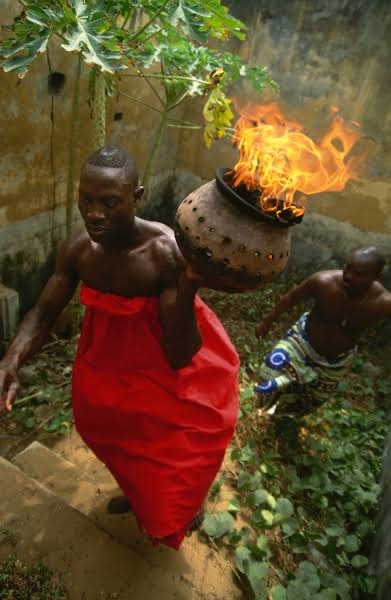
#life#animals#culture#aesthetic#black history#history#blm blacklivesmatter#anime and manga#architecture#black community#heritagesites#culturaltours
267 notes
·
View notes
Text



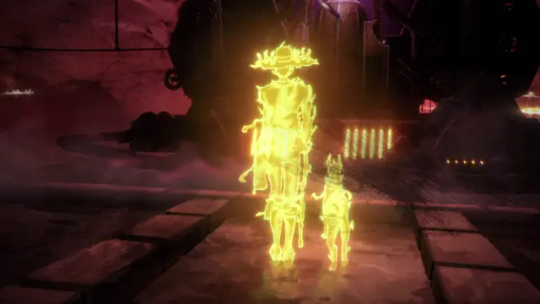
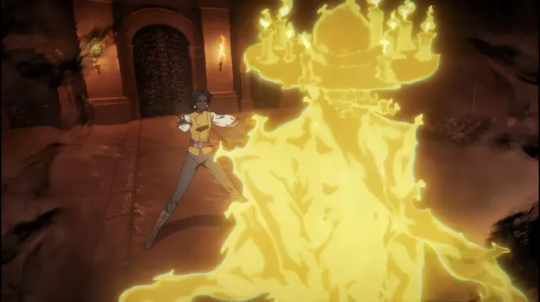


Black Vampires & Papa Legba
Annette (Haiti/Saint-Domingue) - Castlevania Nocturne Louis de Pointe du Lac (Haitian-Creole, New Orleans) - Interview with the Vampire
Papa Legba is a lwa, or loa, in West African Vodun and its diasporic derivatives (Dominican Republic Vudú, Haitian Vodou, Louisiana Voodoo, and Winti), who serves as the intermediary between God and humanity. He stands at a spiritual crossroads and gives (or denies) permission to speak with the spirits of Guineé, and is believed to speak all human languages. In Haiti, he is the great elocutioner. Legba facilitates communication, speech, and understanding. He is commonly associated with dogs. Papa Legba is invoked at the beginning of every ceremony. Papa Legba has his origins in the historic West African kingdom of Dahomey, located within present-day Benin. He usually appears as an old man on a crutch or with a cane, wearing a broad-brimmed straw hat and smoking a pipe, or drinking dark rum. The dog is sacred to him. Legba is syncretized with Saint Peter, Saint Lazarus, and Saint Anthony. His veve incorporates a walking cane on the right side. Offerings to him typically include candy. (Wikipedia)
In the Haitian religion of Vodou, Legba is seen as the intermediary between mortal men and the loa, or lwa. The loa are a group of spirits responsible for various aspects of daily life, and they are the children of a supreme creator, Bondye. They are divided into families, such as the Ghede and Ogou, and practitioners develop relationships with them through offerings, petitions, and prayers. Often, Papa Legba is the one who carries these prayers to the loa. (LearnReligions)
#castlevania nocturne#castlevania#interview with the vampire#louis de pointe du lac#iwtv tvc metas#black power#black history month#religion#louis de pointe du black
17 notes
·
View notes
Text

Ogun, Orisha of iron and combat. As the son of the creator of earth, Oduduwa, Ogun is one of the most revered deities of the Orishas. After Oduduwa had created the lands, Ogun lead the way for the other Orishas, clearing a path to earth. Together the Orishas brought the many aspects of the world to earth, with Ogun as the embodiment of metal and minerals, he brought the land its hardiest materials. With these metals Ogun gave humanity the gift of technology. All tools, from blades and wrenches to guns and cars, derive from Ogun’s source. Ogun is straightforward and aggressive, often being compared to a hound in personality, able to face danger head on. However it is because of his nature that he is the patron of war. Being incredibly adept in battle, he is prone to starting conflict. Like his father/mother Oduduwa before him, Ogun incarnated into a human form in the physical world. Son of his father’s incarnation also named Oduduwa, Ogun inherited the throne of the Yoruba city Ife. However after killing two subjects who disrespected him, he was forced to surrender kingship to his son Oranmiyan. Despite leaving the physical world, Ogun promised to aid those who called to him.
Ogun is one of the most popular and well known members of the Yoruba Orishas, with his worship transmitting to large portion of west Africa. One can find west African counterparts of Ogun in the Dahomey Gu and the Ewe Vodun Egu who is also referred to as Gu. Due to the slave trade, Ogun’s worship was transmitted and spread to the americas. His American theological descendants lay across the practices of the Brazilian Candomblé, Santeria, Dominican Vudu, New Orleans Voodoo, and Haitian Vodou. In Candomblé practices Ogun, known to them as Ogum, is synchronous with the Christian Saint George, Sebastian, Anthony and Peter. Ogun is the patron deity of many professions, with blacksmiths, drivers, soldiers and engineers being some of the many people who call upon Ogun’s protection. Ogun holds two festivals in his honor, the Ogun festival is called by a priest on the advent of a new moon, nine days later the festival starts and lasts seven days on the fourth they they sacrifice a dog an animal closely associated with Ogun. The second is the Elefon festival which celebrates the return of Yoruba warriors and the start of a new crop season, these celebrations hold a ceremony in which an individual wearing an Epa mask jumps off a mound, losing balance or falling is said to be an omen fortelling a bad crop year. Ogun’s many names include Ogou, Gou, Ogu and Oggun. Yoruba legends states that Ogun was an earthly king that ruled over Ife along with other earthly Orishas, some have claimed that this could mean that the Orishas are deified kings whose exploits were turned into legend. However others have countered saying that adopting the name of a Yoruba god when taking the throne of Ife may have been a tradition, with those rulers exploits being woven into the already existing deity’s narrative.
#art#character design#mythology#deity#ogun#oggun#ogum#ogou#gou#ogu#gu#egu#Yoruba mythology#yoruba#nigerian mythology#african mythology#africa#west africa#haitian vodou#brazilian mythology#candomblé#santeria#dominican vudu#new orleans voodoo#mecha design#orisha#metal god#war god#technology god#african diaspora
15 notes
·
View notes
Text
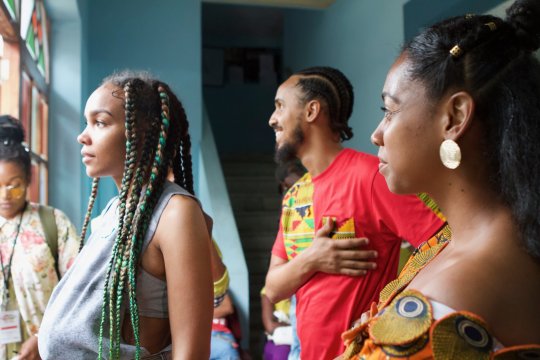
According to Dr. Yvonne Chireau, "Hoodoo is an African American-based tradition that makes use of natural and supernatural elements in order to create and effect change in the human experience."
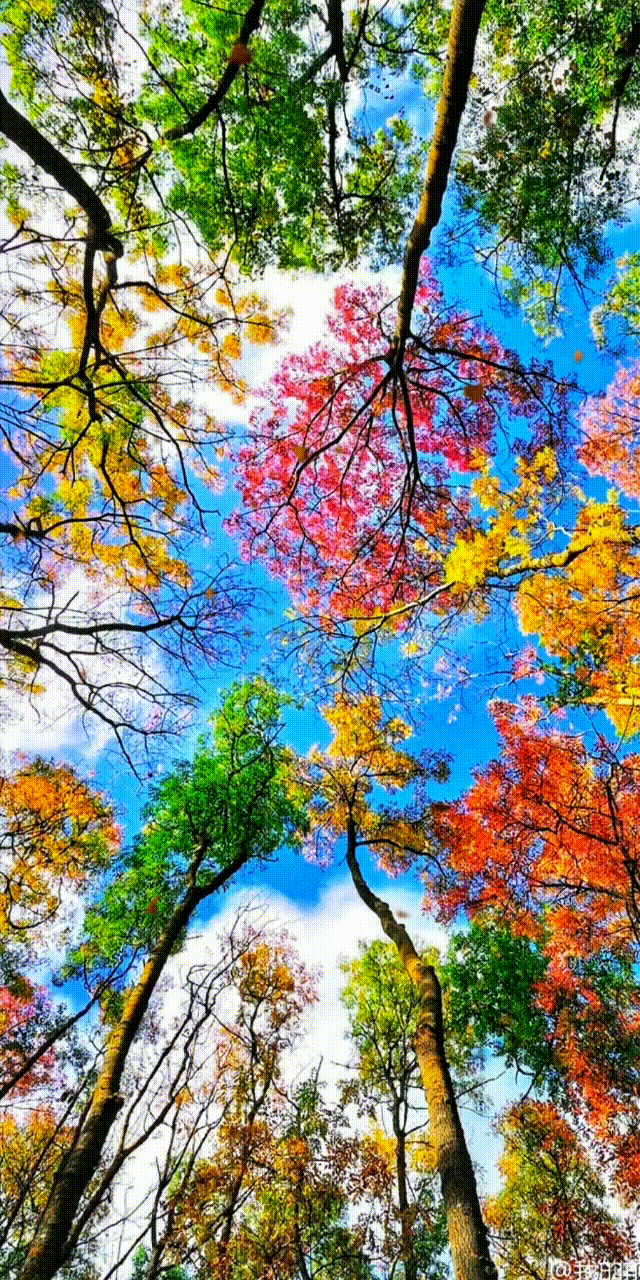
Hoodoo was created by African Americans, who were among over 12 million enslaved Africans from various Central and West African ethnic groups being transported to the Americas from the 16th to 19th centuries (1514 to 1867) as part of the transatlantic slave trade. The transatlantic slave trade to the United States occurred between 1619 and 1808, and the illegal slave trade in the United States occurred between 1808 and 1860. Between 1619 and 1860 approximately 500,000 enslaved Africans were transported to the United States.
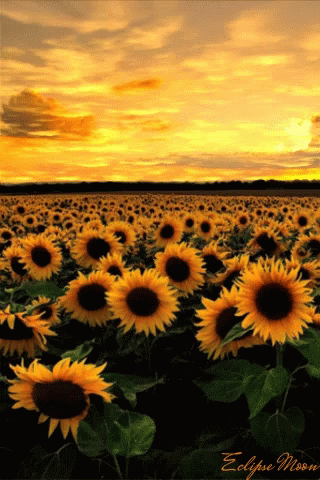
From Central Africa, Hoodoo has Bakongo magical influence from the Bakongo religion incorporating the Kongo cosmogram, Simbi water spirits, and Nkisi and Minkisi practices. The West African influence is Vodun from the Fon and Ewe people in Benin and Togo following some elements from the Yoruba religion. After their contact with European slave traders and missionaries, some Africans converted to Christianity willingly, while other enslaved Africans were forced to become Christian which resulted in a syncretization of African spiritual practices and beliefs with the Christian faith.
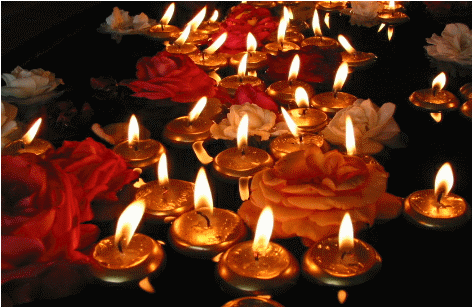
Enslaved and free Africans learned regional indigenous botanical knowledge after they arrived to the United States. The extent to which Hoodoo could be practiced varied by region and the temperament of the slaveholders. For example, the Gullah people of the coastal Southeast experienced an isolation and relative freedom that allowed retention of various traditional West African cultural practices. Gullah people and enslaved African-Americans in the Mississippi Delta, where the concentration of slaves was dense, Hoodoo was practiced under a large cover of secrecy. The reason for secrecy among enslaved and free African Americans was that slave codes prohibited large gatherings of enslaved and free African people. Slaveholders experienced how slave religion ignited slave revolts among enslaved and free African people, and some leaders of slave insurrections were African ministers or conjure doctors
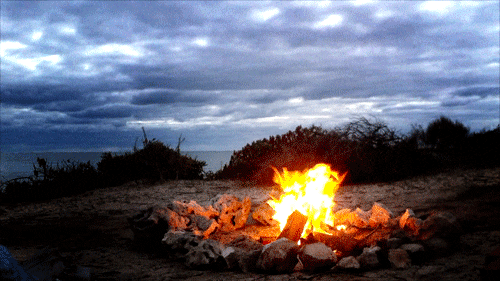
#african#afrakan#kemetic dreams#africans#brownskin#afrakans#brown skin#african culture#afrakan spirituality#bakongo#congo#conjure#ancestor veneration#rootwork#hoodoo#nkisi#simbi#botanical#botanic garden#gullah#gullah geechee#gullah gullah island#mississippi#mississippi delta#slave codes#vodun#cosmogram#yoruba#america#african american
210 notes
·
View notes
Text

Anansi the Story Weaver
I had this perfect sequence of ideas that just sort of fit together in a linear fashion. Let me run you through my thought process:
I was thinking about Kaida and her family, a lot of my inspiration for them came from Real world Voodoo practices; Her father is inspired by Baron Samedi the Loa spirit of Death and her adoptive mother is inspired by the historical Voodoo Queen of New Orleans Marie Laveau.
Voodoo originated as the African religion of Vodun, actually several West African traditions overlapped and then mixed with Catholicism as People were forced to America and Caribbean through Slavery.
I didn't nessisarily find a Loa equivalent to Anansi in Voodoo but that doesn't mean it doesn't exist. However Anansi originates from Ghana which is also in West Africa, and stories of the Trickster Spider God traveled the same way to America and the Caribbean becoming very popular. I can see how a tiny Underdog Spider using his cleverness to outwit and defeat vastly more powerful opponents would really appeal to people in such an underdog situation. Anansi is also intrinsically connected to a very important African tradition of Oral Folklore as the God of Storytelling. Being a Storyteller was an incredibly important role passed from generation to generation and that tradition was almost entirely lost because of it being disrupted by Colonialism and Slavery!
Anansi already is kinda canonically considered the OG Spider-man both historically and in Marvel Anansi (Earth 616) is the First Spider-man. Spiderman is also frequently a constant Underdog Hero who uses his skill, intelligence, and clever trickery in order to outwit and defeat vastly more powerful opponents. Also I feel like the idea of Anansi weaving stories from his webs connects thematically to the Spiderverse series concept of all Spider-people being interconnected by their stories
The pokemon Spidops uses it's webs to weave and sew with it's webs, and it's abdomen even looks like a bobbin of thread. Also in it's shiny form Spidops turns Red and Black looking very Spider-man like following the same color scheme as Miles Morales who's an African/Puerto Rican American which fits with the same geography as Anansi!
Anansi -> Spiderman -> Spidops -> Spiderman -> Anansi! It all comes full circle. Beautuful!
#my art#art#Story#storytelling#Anansi the spider#Anansi#Spider#spiderman#Anansi Spiderman#African#Ghana#african folklore#Spider god#Shiny#shiny pokemon#pokemon#pokemon pirate#poke pirate#Pirate#Spidops#Shiny Spidops#Web#Needle
11 notes
·
View notes
Text

Rainbow Spirits
Through many cultures the rainbow is something magical and sacred. These are some of the deities and spirits associated with the rainbow
Manzat: Mesopotamian and Elamite Goddess who was the personification of the rainbow
Iris: Greek Goddess who personifies the rainbow, or in other myths, the rainbow is the path she travels as the delivers messages from the Gods to the human realm
Rainbow Serpent: Aboriginal Australian Creator god who also controlled the rain
Hong: Chinese two-headed Dragon who represents the rainbow
Ix Chel: Mesoamerican Goddess of rain, birth, and healing. Chel means rainbow.
Anuenue: Hawaiian messenger Goddess to her brothers, Tane and Kanaloa. She is the Rainbow Maiden.
Oxumare: Yoruba Orisha who is the personification of the rainbow.
Ayida-Weddo: Haitian Vodou Loa who is the personification of the rainbow
Dan: West African Vodun spirit who is represented as a rainbow serpent. Dan is the androgynous son of Mawu, the Divine Creator, and acts as a mediator between the spirits and the living.
Uenuku and Kahukura: Māori atua's and prominent ancestors, both of which are personifications of the rainbow, and usually represent omens.
Cuchavira: Meaning "shining air", she is the personification of the rainbow and protectress of working women and the ill for the Muisca, the indigenous people of the highlands in the Andes.
Amitolane: Rainbow spirit from the mythology of the Zuni, a Native American tribe.
Prende: Albanian Goddess of the dawn, love, beauty, fertility and health. Her belt was said to be the rainbow.
Indra: Hindu God who is the King of the devas and Svarga. He is a God of the sky, lightning, weather, thunder, storm, rain, and war. In Sanskit the rainbow is called the "indradhanus" or the Bow of Indra.
Rama: Hindu hero-king who was the seventh avatar of the God Vishny in the Vaisnava tradition. A Bengali word for rainbow is "rongdhonu", meaning Rama's Bow
Rainbow Prince: French fairytale prince who can only speak when there is a rainbow
Christian God: After the devastating flood that killed all life except for fish and the animals and people on Noah's Ark, God made a promise to never again destroy all life in this way. He gave Earth the rainbow as a symbol of this covenant.
Leprechaun: being from Irish myth that is sometimes classed as one of the Aos Sí. The leprechaun was thought to guard the pot of gold at the end of the rainbow.
Unicorn: A new link between the mythical unicorn and rainbows has been forged, where these have become almost inseparable. It is unsure where this first started. Unicorns symbolize purity, blessing, healing, and freedom.
[Part of a Rainbowmancy series, masterpost here]
#rainbowmancy#rainbow magic#rainbow witch#deity#rainbow#magic#spirits#unicorn magic#witch#witchcraft#witchblr#paganblr#symbolism#mine#personal#fern's practice
25 notes
·
View notes
Text
Voodoo: The Deep and Complex Spirituality of West Africa

Voodoo is a spiritual practice deeply rooted in African culture, especially in the West African regions of Benin, Togo, and Ghana. Although often misunderstood and stigmatized by popular representations in Western media, Voodoo is a rich and multifaceted tradition that offers unique insights into the connection between the human and the divine, life and death, the seen and the unseen.
The Origins of Voodoo
Voodoo has its roots in the religious traditions of the Fon and Ewe people of Benin and Togo. However, its practices and beliefs are as old as the civilizations that flourished in these regions. The word “Voodoo” comes from the Fon word “vodun,” which means “spirit” or “divine force.” For Voodoo practitioners, the world is filled with spirits that inhabit nature, ancestors, and everyday objects.
These spirits, or “loas,” play essential roles in the lives of devotees. Each loa has its own characteristics, preferences, and powers, and can be invoked to help in specific areas of human life, such as health, love, protection, and prosperity. The loas are not gods in the traditional sense, but rather intermediaries between humans and the supreme Creator, known as Mawu or Nana Buluku, depending on the region.
Voodoo and the African Diaspora
The transatlantic slave trade played a crucial role in the spread of Vodou to the New World. Enslaved Africans took their beliefs and practices to the Caribbean, Latin America, and parts of the United States, where Vodou evolved into different forms, such as Haitian Vodou, Brazilian Candomblé, and Cuban Santería.
In Haiti, Vodou developed into a unique spiritual system, combining elements of African Vodou with the Catholicism imposed by French colonizers. This fusion of beliefs created a syncretic religion that played a crucial role in Haitian history, including the Haitian Revolution, where rebel leaders turned to the lwa for guidance and strength.
The Structure and Practice of Vodou
At the heart of Vodou is the belief in the interdependence between the visible world (the world of the living) and the invisible world (the world of spirits and ancestors). Vodou rituals are performed to maintain balance between these two worlds, ensure the health, prosperity, and protection of devotees, and appease the lwa.
These rituals are led by priests and priestesses known as houngans and mambos. They are responsible for interpreting the will of the lwa, conducting ceremonies, and offering sacrifices, which may include food, drink, and in some cases, animal sacrifices. During the rituals, devotees may enter a trance, allowing a lwa to take possession of their body and communicate directly with those present.
Vodou is also deeply communal. Ceremonies are not only religious events, but also moments of social bonding, where music, dance and singing play a central role. Through these expressions, practitioners reinforce their connections with the loas and with each other, creating a sense of belonging and collective identity.
Myths and Realities
The practice of Voodoo has been the subject of much misinformation and prejudice, especially in the West. Films and popular literature often portray Voodoo in a sensationalist manner, associating it with evil practices such as creating zombies or using Voodoo dolls to harm others. These depictions are not only inaccurate, but also disrespectful of the deep spiritual traditions that Voodoo represents.
In reality, Voodoo is a religion of balance and harmony, where the well-being of the community and the preservation of the natural order are paramount. While there are aspects of justice and retribution in Voodoo, these are only part of the broader spectrum of practices intended to promote life, healing and spiritual connection.
Voodoo Today
Today, Voodoo continues to be a living and vibrant practice, both in West Africa and in communities throughout the African diaspora. In Benin, Voodoo is recognized as an official religion, and celebrations such as National Voodoo Day on January 10 draw thousands of devotees and tourists. In Haiti, despite social and political challenges, Voodoo remains a central force in the country’s national and cultural identity.
In addition, there is growing global interest in Voodoo, especially among those seeking forms of spirituality that offer a more direct and personal connection to the divine. For many, Voodoo offers an alternative to traditional religions, emphasizing community, ancestry, and a connection to nature.
Conclusion Voodoo is much more than popular caricatures make it out to be. It is a rich and complex expression of spirituality that transcends cultural and geographic boundaries, connecting millions of people around the world.
11 notes
·
View notes
Text
Cascarilla & Efun In Your Practice + Their Uses
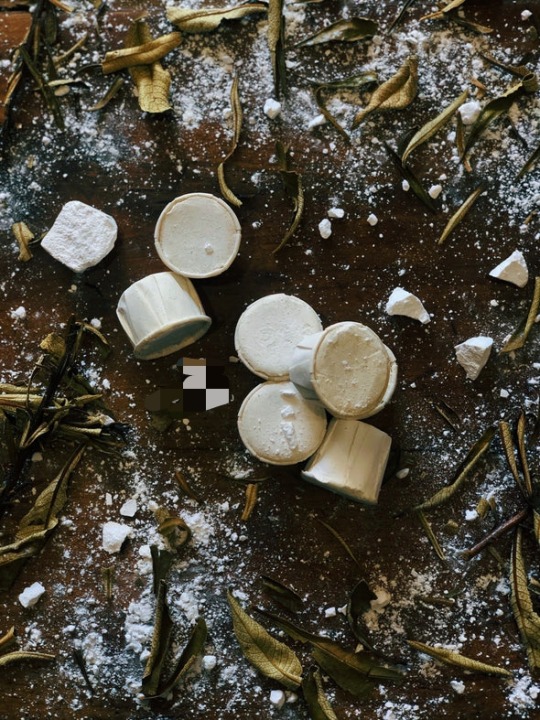
To day in this post I want to speak on spiritual Earth, things that are made from the earth like clay, shell, this form is used different ways. This chalk is an good tool to have in your practice.
It comes from the bark of the Croton elutaria tree that is found in the Caribbean and places like South America. Also is found in traditions of western Africa.


The concept of of this is in all West African diasporic practices including Hoodoo, Vodun/Voodoo, Santeria, Candomblé, Umbanda, Palo, and others. The word 'efun' is Yoruba translates in english meaning ‘chalk.’ In the tradition like Candomblé, efun is a ritual to initiate’s where the head and body is shaved and then decorated with tribal circles or dots (as seen above) useing chalk that was made from white clay, eggshells, or limestone powder. Some practices even use it to make a cross on there arms or on the bottom of their feet before a ritual bath.
Cascarilla & Efun: Sacred White Earth. Over time after useing the bark, other African religions such as Santeria or even in hoodoo and others in the US started using crushed powder egg shells. These were easier to get.

Cascarilla: ☝️Made from white eggshells, particularly from a Black Hen.
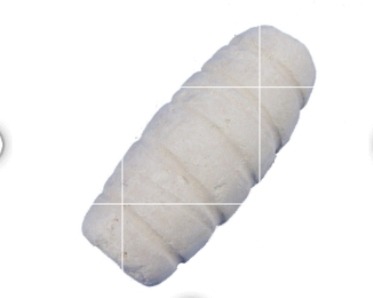
Efun: ☝️Efun is a white chalk that is comprised of ground snail shell and white clay.
What's Are They Really Used For. It is used for a offering Butt NOT a food offering, but an offering to deities of White meaning a of high elevated energies. (God) for example. In Africa it would be to Obatala and other high level good energies.
It's used for magical writings, painting the body during rituals, and as a medicine. In the Bantu system you have 'zumbi' other African practices like Vodou uses Zombi. (Snake deity) Or the God in the Heavens and God on earth like Nyambe/Nzambe.
("A little fact the majority of the Bantu people like others in Africa were and still are Muslim and the small percentage Christian")
Cascarilla Powder: The can be sprinkle anywhere to ward off negative energy: your home, altar, bedroom & your body. Add it to your protection powder. It’s also good to used in bath & washes, even in your divinations. I can tell you it has many uses.
Cascarilla Chalk: It can be used to make sacred symbols, magickal sigils, or veve’s and definition. (Sigils used in different Vodun/Voodoo practices). Cascarilla chalk can also be used to mark boundaries for sacred space sites or decorate sacred items.
Modern Witchcraft Uses: the power of eggshell powder has become prominent among other traditions, including Wicca. However, most non-West African diasporic traditions refer to Cascarilla simply as eggshell powder.
For Cleaning: If you want to cleanse yourself, make a mix of Florida Water & Cascarilla for a simple yet effective spiritual bath simple yet effective. (You can also add dry ingredients to it) You can also add it to a premade floor wash like the Chinese wash.
#Cascarilla uses#Efun uses#African powders#Protection chalk#Powdered chalk#spiritual#Spiritual chalk#southern hoodoo#rootwork#like and/or reblog!#google search#conjuring#traditional hoodoo#follow my blog#Voodoo#IFA#Magic powder#ask me questions#ask me anything#contact me#Teaching magic#rootwork questions#traditional rootwork#black spirituality#southern rootwork#southern conjure#new orleans voodoo
35 notes
·
View notes
Text
Letters from Watson: Wisteria Lodge
Cultural Historical Note: Syncretic Afro-Carribean religions and spiritual traditions First caveat here is that I do not have expertise. I took a class once on African diaspora culture that briefly covered the many religious traditions that inspire depictions of Voodoo in the media. This is still more than Holmes and Watson had access to in the British Museum. In brief: African, mostly west African, religions came to the Americas when their practitioners were kidnapped during the slave trade, and changed and evolved as enslaved African communities encountered Catholicism and indigenous religious practices in and surrounding the Carribean. Practices associated with Vaudou, Santeria, Hoodoo, Vodun, and other diaspora religions have a long history of being misunderstood, misreported, and used for shock value in order to demonize people of African descent, or to tell a titillating story that also reinforces suspicion of such people, as is the case here. Remember folks, racism and stereotyping does not have to be intentional to be harmful!
Case and Themes: racism, exoticism, and religious slander. Warnings: Discussions of animal sacrifice, infanticide, and a lot of slander in the historical context of conflict between religions, and as excuses for colonialism. No more graphic than any case wrap up, but I get to use my unfinished classics degree here briefly.
Allegations within The Adventure of Wisteria Lodge that the practice of Voodoo includes human sacrifice and cannibalism must, of course, be taken with a whole cellar of salt, given the long history of accusing members of minority religions of taboo violence. When we examine any author's use of non-christian religion in their work (specifically when that author comes from a background of christian majority population and historical entanglement of christian religious institutions with the government of their home country) we have to remember that demonizing practitioners of other religions is one of the oldest tricks in the book. It's used both to provide excuses for violence against other communities, and to tell a scary adventure story.
Allegations within The Adventure of Wisteria Lodge that the practice of Voodoo includes human sacrifice and cannibalism must, of course, be taken with a whole cellar of salt, given the long history of accusing members of minority religions of taboo violence.
A modern audience is probably aware of the existence of Blood Libel, or a historical pattern of accusations against Jewish people of killing or planning to kill christian children, which then serve as excuses for violence against Jewish people. This is not unique to the the history of Christianity and Judaism - a pre-christian roman empire accused Carthaginians of widespread infanticide, for one example. In turn, there is modern debate about the true prevalence of infanticide by exposure, i.e. abandoning the baby outside somewhere, within the Roman Empire. (Archaeological evidence for infanticide in the ancient world is muddled at best, given that infant mortality in pre-antibiotic, pre-vaccine eras was just high overall, and burial customs for infants can be very different than the burials of an adult or an older child. There is also the fact that many ancient writings on morality and customs are written necessarily by the privileged few in any society; neither contempt for the poor, nor contempt for the ill and disabled, which are both very key aspects in discussions of historical infanticide, are new inventions.)
When it comes to politics and war between peoples, very little causes your public to support putting their own lives on the line to go fight somebody than accusing another group of shockingly violating some kind of taboo: infanticide, human sacrifice, and cannibalism are among the big ones.
By the time of the 1890s, the British Empire has some key differences from the Roman empire or various medieval kingdoms: it has colonies all over the world and it's people are, for the most part, literate, and have been for multiple generations. There is a huge role for propaganda to play here, with centuries of European nations justifying their projects of invasion, resource extraction, and enslavement on every continent besides Antarctica with claims against indigenous, non-christian religious communities violating every taboo they can think of. Even long after the communities in question are under European control, the religious argument that everyone in the world must be Christianized remains a useful tool in the political playbook, and authors of adventure stories often reinforce this propaganda, because what is shocking sells magazine subscriptions. Xenophobia is profitable so long as people are only a little scared and a lot thrilled: the idea that there are undeniably bad things in the world but they mostly happen elsewhere can be a comforting one. This is where we find the Canon of Sherlock Holmes, not just in The Adventure of Wisteria Lodge, but as an ongoing theme: places outside of England are exciting because they are both the site of scary, sensational, romantic (in the literary sense) violence, and very far away. Colonies and former colonies, in Australia, India, Indonesia, and America are places where Englishman export themselves to, and violence is imported from. A decent chunk of crime in the Sherlock Holmes canon is either the result of foreigners arriving in England with a violent history, or of Englishmen succumbing to violent impulses while outside of England, and bringing retributive violence home with them. This is also why the criminals so often escape the country but not vengeance: even when English law has a plausible reason to hang the dictator Murillo for one of many murders, it is both more exiting and safer for the audience for the man to be murdered in Madrid.
9 notes
·
View notes
Text
Voodoo and Hoodoo: What’s the Difference?
If you live in America, you have undoubtedly come across the terms of voodoo and hoodoo. What is the difference between the two, and how does African (umbrella term) culture play a role in each?

Voodoo
(A.K.A. Vodou, Voudou, Vodun) Voodoo is a religion that originated within Africa amidst the Atlantic slave trade. Its structure comes from a mix of traditional religions of West and Central enslaved Africans (Yoruba, Kongo, and Fon). Once brought to the Hispaniola island, Voodoo saw influences of the culture of the French colonialists who controlled the colony of Saint-Domingue (Freemasonry).
Many Haitians who practice Voodoo also practice Roman Catholicism, not seeing a contradiction between the two systems existing simultaneously. Characterized as Haiti’s “national religion”, Voodoo is one of the most misunderstood religions in the world. Voodoo is monotheistic, giving the teachings of a single supreme God. Believed to have created the universe, this entity is called Bondye or Bonié. For Vodouists, Bondye is seen as the ultimate source of power. This perception of God is also seen as remote, not involving itself in human affairs. While Vodouists often equate Bondye with the Christian God, Vodou does not incorporate belief in a powerful antagonist that opposes the supreme being akin to the Christian notion of Satan.
Vodou also holds the belief of many beings known as Iwa, a term that varies in its translation from “spirits” to “gods”. These beings can in many ways be equated to Christian angels in many of its cosmology. The lwa can offer help, protection, and counsel to humans, in return for ritual service. Each lwa has its own personality and individual correspondences. They can be either loyal or capricious in their dealings with their devotees, with many believing that the lwa are easily offended. When angered, the lwa are believed to remove their protection from their devotees, or to inflict harm.
Vodou also teaches a perspective of the human soul, which is believed to be divided into two parts (both of which exist within the head of a person). One of these is the ti bonnanj ("little good angel"), and it is understood as the conscience that allows an individual to engage in self-reflection and self-criticism. The other part is the gwo bonnanj ("big good angel") and this constitutes the psyche, source of memory, intelligence, and personhood. Vodouists believe that every individual is intrinsically connected to a specific lwa. This lwa is their mèt tèt (master of the head). They believe that this lwa influences the individual's personality. At bodily death, the gwo bonnanj join the Ginen, or ancestral spirits, while the ti bonnanj proceeds to the afterlife to face judgement before Bondye.
Vodou does not promote a dualistic belief in a division between good and evil. It offers no prescriptive code of ethics. Rather than being rule-based, Vodou morality is deemed contextual to the situation.
It is very important to respect Vodou as the closed practice that it is. While misunderstood through various contextualizations, it is a religion felt deeply by a group of people who use it to guide their lives. Those outside do not have the right to infringe upon said spaces.
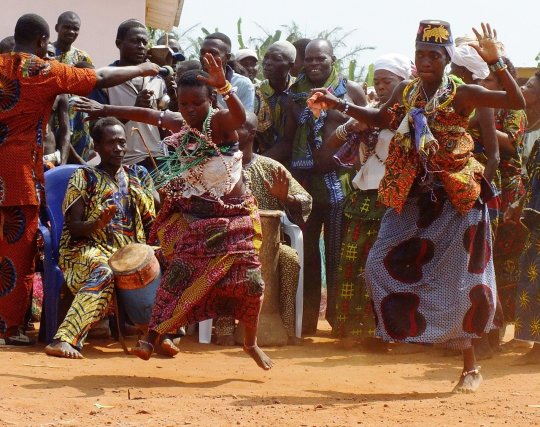
Hoodoo
It is important to understand that Hoodoo does not describe a religion. Rather, Hoodoo is a set of mystical beliefs hailing from along the Mississippi River with influences from Indigenous herbalism, African spiritualities, and Christian influences. Practitioners of Hoodoo are called rootworkers, conjure doctors, conjure man or conjure woman, root doctors, Hoodoo doctors, and swampers.
Many Hoodoo traditions specifically draw from the beliefs of the Bakongo people of Central Africa during the Atlantic slave trade. After their contact with European slave traders and missionaries, some Africans converted to Christianity willingly, while other enslaved Africans were forced to become Christian which resulted in a syncretization of African spiritual practices and beliefs with the Christian faith. Enslaved and free Africans learned regional indigenous botanical knowledge after they arrived to the United States, including another influence to what would become known as Hoodoo.
During the transatlantic slave trade a variety of African plants were brought from Africa to the United States for cultivation (okra, sorghum, yam, benneseed, watermelon, black-eyed peas, etc.). African Americans had their own herbal knowledge that was brought from West and Central Africa to the United States. When it came to the medicinal use of herbs, African Americans learned some medicinal knowledge of herbs from Indigenous peoples. However, the spiritual use of herbs and the practice of Hoodoo remained African in origin as enslaved African-Americans incorporated African religious rituals in the preparation of North American herbs and roots.
Hoodoo was also a key part in black revolution in the United States. Enslaved women would use their knowledge of herbs to induce miscarriages so white owners wouldn’t be able to take their children. There were also examples of hoodoo being used to poison and kill white slave owners. The Bible itself, in conjunction with Hoodoo, was used in slave liberation. Free and enslaved people could read the stories of the Hebrews in the Bible, and found them similar to their situation in the United States as slaves. The Hebrews in the Old Testament were freed from slavery in Egypt under the leadership of Moses (held to be a conjurer in the beliefs of many who practice Hoodoo).

Hoodoo is also a closed practice, requiring initiation for practitioners.
67 notes
·
View notes